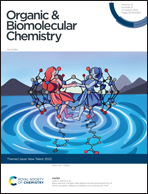Recent approaches for the synthesis of pyridines and (iso)quinolines using propargylic Alcohols
Abstract
Propargylic alcohols are one of the readily available and highly explored building blocks in organic synthesis. They show distinct reactivities compared to simple alcohols and/or alkynes, and hence provide diverse possibilities to develop novel synthetic strategies for the construction of polycyclic systems, including heterocycles. The six-membered heterocycles, pyridines, quinolines, and isoquinolines, are very important privileged structures in medicinal chemistry and drug discovery due to their broad spectrum of biological activities. They are also part of vitamins, nucleic acids, pharmaceuticals, antibiotics, dyes, and agrochemicals. Many synthetic strategies have been developed for the rapid and efficient generation of these cyclic systems. One such strategy is employing the propargylic alcohols as reactants in the form of either a 3-carbon component or 2-carbon unit. Thus, in this review article, we aimed to summarize various approaches to pyridines, quinolines, and isoquinolines from propargylic alcohols. To the best of our knowledge, so far, no focused reviews have appeared on this topic in the literature. Due to the many reports available, we also restricted ourselves to the developments during the past 17 years, i.e., 2005–2021. We strongly believe that this review article provides comprehensive coverage of research articles on the title topic, and will be of great value for the organic synthetic community for further developments in this area of research.

- This article is part of the themed collection: New Talent


 Please wait while we load your content...
Please wait while we load your content...